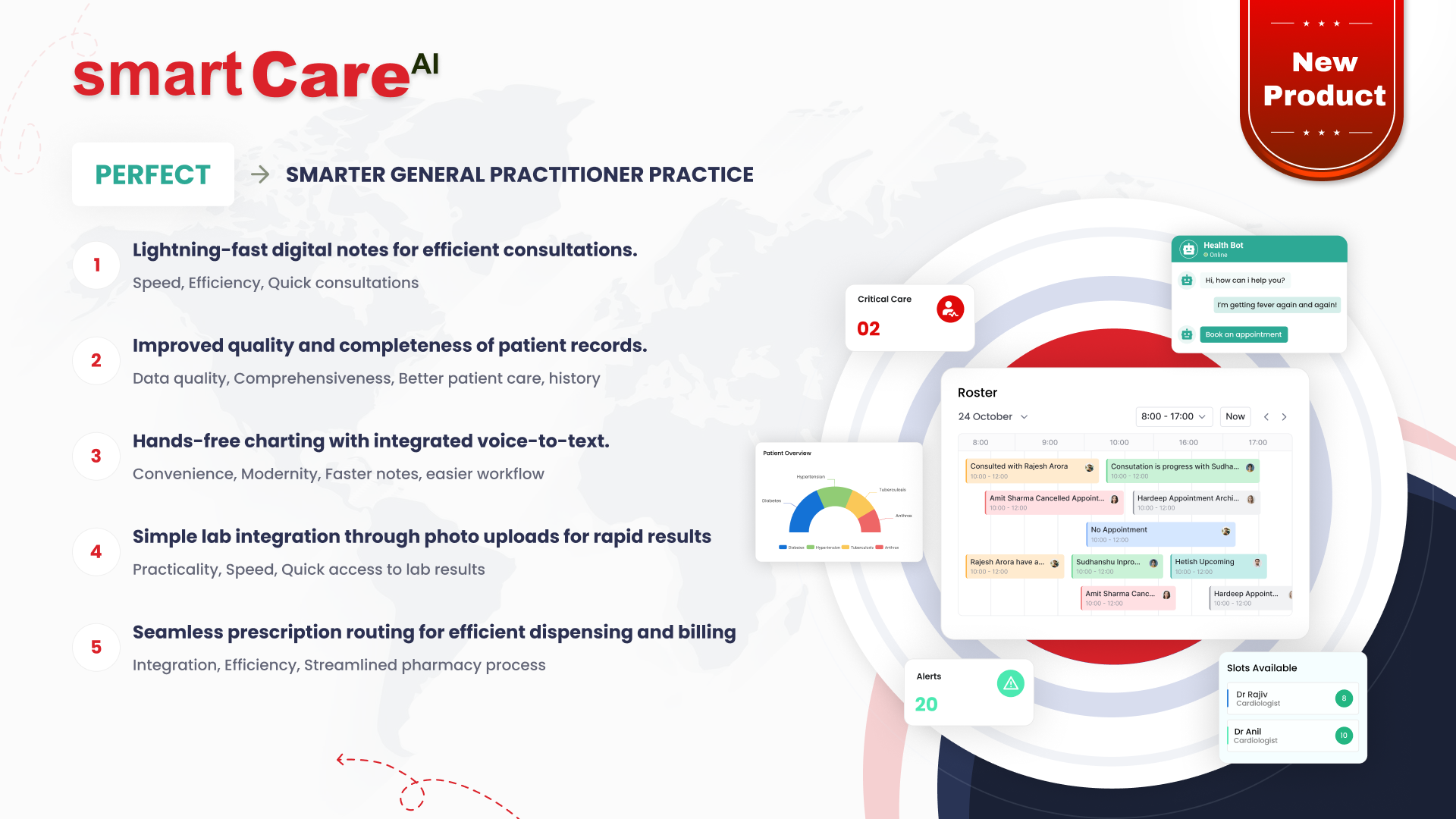smartData is committed to operationalizing business growth tactics for the delivery of continued great value to customers and driving sustainable growth.
-
Embrace Agile Methodologies:
Adopting agile methodologies such as Scrum or Kanban can significantly enhance your development process. Thus Agile promotes iterative development, continuous feedback and adaptability enabling your team to respond swiftly to market changes and customer needs. Breaking down projects into manageable sprints and fostering collaboration can help you accelerate product development and delivery.
-
Invest in Talent Development:
Your people are your most valuable asset. By investing in continuous learning & development programs for your team, you improve their skills as well boost morale & retention. Encourage them to participate in industry conferences, workshops & online courses that will equip them with new knowledge & skills across various spheres of their specialization or work field. Implement mentorship programs to foster knowledge sharing and professional growth within your organization.
-
Customer-Centricity should be given Priority:
Understanding and meeting the desires of clients is an essential thing to look into when it comes to business expansion. Implement strong customer feedback mechanisms in order to get views from customers and understand their pain points. Use this information to make your products and services better. Strong relationships with customers can be built by having good supports that are proactive making them loyal and advocates.
-
Make Decisions Based on Data:
Use data extensively in making important decisions for the company. Employ analytic tools that will allow you track KPIs, thus giving insights on user behaviour, market trends, as well as operational efficiency. It enables you to identify areas where there are opportunities of improvement, optimize marketing strategies and make specific product development choices basing on facts.
-
Promote Innovation:
The software industry requires a culture of creativity if one wants to remain competitive in this field. Urge your team members to try out new technologies, frameworks or methodologies available today such as those found in open-source applications on the Internet like AngularJS instead of just sticking with things they are comfortable with such as Java Spring Boot framework only due its complexity or something like ‘considerable learning curve’. Dedicate some time and resources for research and development projects. Build an innovation lab or organize hackathons where people will have room for creative thinking processes leading to generation of fresh ideas.
-
Broaden Your Market Coverage:
By recognizing and concentrating on new markets, there is potential to achieve substantial growth. Assess the market and find out what necessities are expected from various client divisions. Consider diversifying your product line or entering into other geographical locations. Collaborating with other firms or resellers can also help you expand your market base.
-
Optimize Your Sales and Marketing Strategies:
Efficient sales and marketing approaches are vital drivers of growth. Create a marketing plan that has all the essential elements, such as content marketing, social media, email campaigns, search engine optimization (SEO) etc. Use customer avatars in order to personalize your message for better taste by your target audience as well as demographics which will be needed. Equip your sales team with necessary tools and knowledge required to translate leads into customers.
-
Ensure Operational Excellence:
Simplifying the way in which you do things provides cost savings and increases effectiveness within an organization’s operations. Implement project management best practices; implement quality assurance measures; involve DevOps. Turn repetitive duties over to automation so that it can free up time for more strategic work for those who work under you regularly review and optimize processes to ensure they meet business goals.
-
Strategic Partnerships:
Such strategic partnerships can expand a firm quite rapidly, allowing access to new resources, technologies, and markets. Alliance with other companies, industry associations, and universities to borrow from their expertise and networks. Such strategic alliances will eventually give way to joint ventures, co-development projects, and further market expansion.
Conclusion
Business growth for any software company is based on a multi-faceted approach that combines innovation, customer focus, and operational excellence. You can ensure long-lasting success for your company if you focus on agile methodologies, talented employees, customer-centricity, leverage through data, innovation, market reach, optimized sales and marketing, operational excellence, strategic partnerships, and financial health.
Contact us today to learn more about what we can do for your business in this dynamic industry of software.
Integrating AI is not just about leveraging new technology—it’s about strategically enhancing the systems to create meaningful and sustainable improvements.
- Data Availability and Quality:
Artificial Intelligence systems can only learn as well as the quality of the data they are fed. Make sure you have access to representative, varied, and high-quality datasets.
- Ethical Concerns:
In order to prevent biases, particularly in decision-making processes, AI integration must abide by ethical standards. Transparency in AI systems and routine audits are crucial.
- Infrastructure and Costs:
Evaluate whether present IT setup allows for the integration of AI. Also take into account the expenses related to system upgrades, continuous maintenance, and future scalability.
- Talent Acquisition:
Particular knowledge is needed for Artificial Intelligence. Make sure you have partners who can help you close the skill gap, or that you have the necessary talent.
- Regulatory Compliance:
Stay updated with the AI governance framework and compliance requirements of the industry to mitigate legal risks.
- Customer and Stakeholder Impact:
Evaluate how AI will impact the customers and other stakeholders. Aim for enhancements that improve user experiences and operational efficiency.
User-Centered Design (UCD) is crucial as it focuses on meeting the specific needs and preferences of the end users. By prioritizing user input at every stage of product or service development, UCD leads to multiple advantages, such as increased user satisfaction, improved usability, and higher success rates for products and services in the market.
Not all software is the same. The ones that truly capture users’ attention and make a lasting impact often stem from a carefully planned and intentional design process.
UX Designers and product managers who follow the User-Centered Design (UCD) methodologies recognize the significance of acquiring accurate data to gain insights into user needs. To achieve this, they conduct comprehensive research, gather feedback through surveys, and perform user testing to get a deep understanding of users/customers.
A famous quote by Frank Chimero “People ignore design that ignores people”. And this quote perfectly summarizes the importance of user-centered design.
User-Centered design offers a number of benefits:
- Improve efficiency and avoid user frustration
When a product or service focuses on users’ needs, it helps them complete tasks more easily and quickly. This saves time and money for both the user and the organization.
- Increase usability and streamline development process
A product that is intuitive, easy to use and meet the need of user will increase usability with level of satisfaction.
- Higher customer retention with enhanced user experience and that will increase ROI
The implementation of enhanced user experience strategies leads to higher customer retention rates, ultimately resulting in a significant increase in return on investment (ROI).
- Competitive Edge
User-centeric design can provide a significant advantage over competitors and if the experience of user is good that help your organization with other providing better experience.
When individuals find a product appealing, they tend to use it regularly and enthusiastically promote it to their friends and family. As the number of people using the product grows, it translates into enhanced business opportunities for the company.
The array of “smart” products are designed in order to cater to various industry needs, providing businesses with scalable, customizable, and ready to use solutions. smartProducts are not only efficient in their respective fields but also serve as robust bases for further development tailored to specific business requirements. Here are some of smartProducts and highlights how they can be directly utilized or further customized to meet unique business needs.
-
- smartTelehealth: Telehealth Solutions –
offers robust telehealth solutions designed to improve patient care by facilitating secure electronic exchanges of clinical information along with HIPAA compliance. It empowers practitioners to conduct secure video consultations with patients. They can review medical history and utilize notes from the system’s symptom checker to diagnose and create treatment plans. Understanding data security and basic troubleshooting rounds out the skillset for a successful smartTelehealth practitioner. This enhances the speed, quality, and coordination of patient care.
- smartTelehealth: Telehealth Solutions –
Features:
-
-
- Telemedicine:
Virtual consultations and remote patient monitoring.
- Electronic Health Records (EHR):
Secure and accessible patient data storage.
- Health Information Exchange (HIE):
facilitates secure electronic sharing of healthcare data among medical facilities, health information organizations, and government agencies, adhering to national standards. This ensures timely, accurate data transmission to improve care coordination and public health reporting.
- Telemedicine:
-
Benefits:
-
-
- For Healthcare Providers:
Improved operational efficiency, enhanced patient care, and compliance with healthcare standards.
- For Patients:
Increased accessibility to healthcare services, convenience, and better engagement with healthcare providers.
- For Healthcare Providers:
- smartHealth: Comprehensive Healthcare Solutions –
HIPAA compliant smartHealth suite includes SaaS based EHR and practice management solution, designed for daily clinical flow which enhances user experience by creating a seamless transition. It has provision to manage multiple-locations, staff, patients, scheduling, dynamic templates for SOAP notes, e-prescription, electronic/paper claim processing along-with access of patient portal to complete intake and view, download clinical records. It also covers aspects specific to health information exchanges, and integration with telemedicine platforms. These tools aim to enhance patient engagement and streamline healthcare delivery.
-
Features:
-
-
- Telemedicine Platforms:
Tools for remote patient consultations.
- EHR Systems:
Comprehensive patient record management.
- HIE Solutions:
Secure data exchange platforms.
- Telemedicine Platforms:
-
Benefits:
-
-
- Direct Use:
Immediate implementation to improve healthcare delivery.
- Scalability:
Solutions that grow with the healthcare provider’s needs, ensuring long term viability and adaptability.
- Direct Use:
- smartVideo: Video Consultation –
Solution covering both healthcare and non-healthcare domain. It offers real-time audio/video consultations with peers, teammates or clients. The platform allows real-time audio and video communication between people or groups.
-
It works on various devices, offers text, audio, and video chat options, and ensures secure connections.
-
This versatile platform is useful in various fields like healthcare, e-learning, and legal consultations. Platform is built for easy integration with other applications and can be customized for specific needs.
-
An intelligent bandwidth management system ensures smooth communication even on weak connections.
-
It uses native WebRTC libraries and can customized based on different parameters for meetings. Transfer files, share screen or connect over video call with multiple participants.
-
- smartFood: Restaurant Management Solutions –
smartFood platform offers comprehensive food ordering and restaurant management solutions, enhancing both customer experience and operational efficiency for restaurants. It can be directly offered and suited for restaurants, food & beverage outlets, chefs and foodies.
-
Features:
-
- Order Management:
Efficient processing and tracking of food orders.
- Payment Integration:
Multiple payment options for ease of transactions.
- Customer Insights:
Detailed analytics on customer preferences and behaviors.
- Delivery app:
used by drivers to collect orders and deliver with support of real time tracking aspects
- For Restaurants:
Streamlined operations, better customer engagement, and increased operational efficiency.
- For Customers:
Enhanced ordering experience, personalized offers, and quick service.
- Order Management:
- smartUtility: OnDemand Utility Apps –
This smartProduct solution provides ready-to-use utility apps that are scalable and customizable to meet specific business needs. It offers comprehensive scheduling and management solutions tailored to optimize business operations. It includes features for
-
Scheduling availability on a calendar, managing multiple calendar views, and setting reminders.
-
Users can filter services by type, location, and price, manage booking rules, reschedule appointments, and integrate preferred payment gateways for a seamless payment process.
-
It allows for reviews and ratings, efficient service and product management, and ensures a user-friendly interface compatible with browsers and mobile devices.
-
Businesses can manage staff and services, track tickets, and handle both fixed and hourly jobs through a single portal.
-
- smartEcommerce: Platform –
offers comprehensive e-commerce solution that streamlines inventory management, supports single and multi-vendor stores, and integrates advanced search, 3rd party payment, and shipping services. Main features include
- Customizable Shopping Journey:
Tailors entire shopping experience to meet the needs of different sales channels
- Single and Multi-Vendor Management:
This smartProduct support both single vendor stores and multi-vendor portals to manage variety of products and categories. Eliminates manual tasks associated with managing large inventories, multiple stores, and fulfilment networks.
- Admin Panel:
Utilizes customer data for personalized recommendations and targeted advertising, order tracking, inventory, and dispute management. It also provides built-in features like responsive design for mobile users and supports multi-lingual, multi-currency, and various sales channels integration.
- Customizable Shopping Journey:
In today’s dynamic business landscape, digital tools have become an indispensable driver of success. These innovative technologies empower companies to not only enhance their productivity and efficiency, but also improve output, foster data-driven decision making, and cultivate a culture of innovation.
Enhanced Productivity and Efficiency
Improved Output and Effectiveness Digital tools have a big impact on boosting output and effectiveness. Automatic workflows online teamwork platforms, and advanced data analysis help companies to simplify their work and cut out time-wasting manual tasks. Software for managing projects, systems to handle customer relationships (CRM), and tools to plan company resources (ERP) allow teams to work together better, use resources, and get more done in less time. For example, our work setting up custom ERP systems for clients has led to big drops in running costs and time spent on everyday jobs and reduced manual errors. These systems let people see data right away, which helps them make choices faster and adapt quicker. Adding AI and machine learning to these platforms makes them even better at predicting what’s coming, so businesses can spot trends early and make changes before they’re needed. This not only makes customers happier but also allows human staff to tackle more challenging jobs.
Data-Driven Decision Making
We are now in a place where companies have access to a lot of data due to information overload. In this digital era, organizations can collect, analyze, and interpret big data using tools. This can be done with tools such as IoT devices, business intelligence software, and data analytics platforms to make informed choices. As these learnings contribute towards improved strategies lead to greater efficiency. It helps raise the bottom line for the company. At smartData, we have helped many clients unlock their data potential through customized analytical solutions. By converting raw information into actionable insights, we enable organizations to better understand their marketplaces, predict consumer behavior, and identify opportunities. In today’s dynamic markets, this approach centered on facts is imperative for surviving.
Enhanced flexibility and adaptability
Digital tools facilitate easy adjustments for organizations in the face of ever-changing market conditions. For instance, cloud computing permits companies to increase or reduce IT infrastructure according to business needs without large expenses. Scalability is critical for firms that seek to expand their activities or penetrate new markets. We have implemented cloud solutions successfully across many industries facilitating greater agility and flexibility among other benefits. Whether it’s migrating legacy systems to the cloud or developing cloud-native applications, our solutions deliver the scalability needed to support business growth.
Innovation and competitive advantage
Digital tools are essentially innovation catalysts. They provide a platform where companies can comfortably test novel ideas, products, and services. Through nurturing an innovative culture, businesses can remain ahead of the competition and maintain their competitive advantages. Innovation lies at the heart of smartData’s work. We constantly investigate emerging technologies like blockchain, AI as well as IoT that enable us to develop innovative answers for our clients. We need only embrace these digital tools so that we make a difference in this life by being able to succeed over time.
Closing Thoughts
Digital tools are used extensively and significantly in business. These technologies enhance productivity, customer engagement, and data-driven decision making, making them essential for success in today’s corporate environment. Our goal is to make sure that our clients take full advantage of their potential and migrate seamlessly through stages of the digital revolution. This indicates that since the opportunities are unlimited and the digital world is still growing, we are really excited about what is ahead of us as we continue to adopt innovative methods of doing things.
We at smartData Enterprises are at the forefront of this revolution, leveraging AI to enhance our services and expand our market presence. With the innovative implementations, we look to make life easier for ourselves and our customers.
One major area where AI is making a significant impact is customer service. AI-powered chatbots and virtual assistants are now common, providing quick and accurate responses to customer inquiries. These tools help businesses operate 24/7, ensuring that customer needs are met promptly and effectively. For instance, we use chatbots to handle initial customer queries, freeing up human agents to tackle more complex issues. This not only improves customer satisfaction but also optimizes workforce productivity.
Another key innovation is the use of AI in data analysis. Businesses generate vast amounts of data daily, and algorithms can analyze this data to uncover valuable insights. We at smartData utilize AI to analyze customer data, market trends, and operational metrics. This analysis helps them make informed decisions, identify new market opportunities, and tailor their services to meet specific client needs. For example, AI can predict market trends, allowing us to offer proactive solutions to their clients, staying ahead of the competition.
Moreover, AI-driven automation is streamlining various business processes. Routine tasks can be automated, reducing the risk of human error and freeing up time for more strategic activities. smartData is using AI to automate in-house processes, resulting in significant cost savings and increased operational efficiency.
AI-driven innovations are helping service providers like smartData Enterprises thrive in the competitive US market. By improving customer service, enhancing data analysis, personalizing services, and automating routine tasks, AI is driving business growth and ensuring that companies can adapt to ever-changing market demands. These advancements not only boost productivity but also create a more engaging and responsive customer experience.
Healthcare is becoming more accessible, efficient, and even personalized. It’s developing in India as well, thanks to a wave of new technology. Here’s a look at some exciting trends:-
-
Telemedicine and Remote Monitoring
The growing demand for convenient access to expert doctors is driving the rise of telehealth platforms like Practo and mfine. These platforms allow you to chat with qualified doctors directly through your phone, making healthcare more accessible than ever before. This was especially helpful during COVID-19 when people needed to avoid crowded clinics.
-
Robotics Surgery
Healthcare sectors are taking help from robots to conduct surgeries based on their patient records and historical trends. Hospitals are using robotic systems to perform complex surgeries with smaller cuts, leading to faster recovery times for patients.
-
Virtual Reality and Augmented Reality in Healthcare
VR and AR technologies are being used to train doctors and even help with therapy and rehabilitation. Lot of companies are creating AR/VR solutions that improve patient care.

-
Apps for Everything
From scheduling tests to ordering medication, there’s an app for that! Mfine, Healthians and 1mg offer a variety of healthcare services to make patient life simple.
-
Healthcare Apps and Wearable Devices
Wearable devices track your health 24/7, sending real-time data to your device that your doctor can access. This allows them to monitor your health even outside the hospital
-
Smarter Diagnosis
Artificial intelligence is making doctors even sharper. AI tools analyze X-rays and scans, helping doctors identify diseases faster and more accurately.
- Keeping Patient Records Safe
Blockchain technology revolutionizes medical record security. It creates a secure system for storing individuals’ medical records, ensuring your information stays private and can be easily shared with different doctors.
In today’s competitive business landscape, a well-defined business development strategy is crucial for sustainable growth and success. This strategy should encompass a multifaceted approach that leverages collaboration, innovation, digital marketing, effective branding, and a commitment to customer-centricity.

- Establishing Collaboration:
Collaborating with complementary businesses, companies can leverage each other’s strengths to provide a comprehensive suite of products or services. This not only expands the customer base but also enhances the overall value proposition for the business.
- Embracing Innovation and technology:
Innovation using technology is paramount in today’s business landscape. Businesses that invest in innovative technologies like automation, AI,ML etc. are bound to stay ahead and are better positioned for sustained growth and the business.
- Leveraging Digital Marketing:
Developing a robust online presence through an informative website, engaging social media profiles, and targeted email campaigns allows companies to reach a broader audience and bring new business.
- Marketing and branding strategy:
Investing in targeted marketing campaigns and strategy, effective use of social media, and building a strong brand identity can significantly boost visibility and customer engagement. A compelling brand story and a clear value proposition can set your company apart in a crowded marketplace.
- Sales Training:
Providing ongoing training and development to your sales team so that they remain up to date with the latest sales techniques, industry trends and customer acquisition techniques is key to expanding the business.
- Customer relationship management:
Building strong, lasting relationships with clients through personalized communication, exceptional customer service, and feedback mechanisms not only drives customer loyalty but also opens doors for repeat business and referrals.
In conclusion, effective business development strategies encompass a multifaceted approach that integrates partnerships, marketing, innovation, customer-centricity, and sales excellence. By implementing these strategies, businesses can position themselves for sustainable growth and success in an increasingly dynamic and competitive marketplace.
The landscape of business development is constantly evolving. To stay ahead of the curve, professionals must embrace innovative tools and technologies. Artificial Intelligence (AI) is rapidly emerging as a game-changer in this field, offering a multitude of benefits for streamlining workflows and maximizing sales potential.
Here’s the lowdown on what I learned:
-
AI can be our tireless teammate:
Imagine saying goodbye to repetitive tasks like lead qualification and scheduling meetings. AI can handle that, freeing us up to focus on what we do best – building connections and closing deals. AI-powered lead scoring can improve lead qualification accuracy by up to 70%, according to Marketo (https://tray.io/blog/marketo-lead-scoring-essentials) . This translates to more time spent on nurturing high-potential leads.
-
Data drives decisions, not just hunches:
We all have our sales instincts, but AI takes it a step further. By analyzing massive amounts of data, AI can predict which leads are most likely to convert, helping us prioritize our efforts.

-
Hello personalization, goodbye generic pitches:
Forget one-size-fits-all marketing messages. AI can help us tailor our approach to each customer, offering them exactly what they need. 80% of consumers prefer businesses that personalize their experience(1). That’s huge!
-
Unleashing the power of “predictive analytics”:
Imagine knowing, with some certainty, which customers are at risk of churning or which ones are ripe for upselling. AI can analyze past behavior and predict future trends, giving us a golden opportunity to retain valuable customers and boost revenue.
-
The future is bright (and full of AI assistants):
Get ready to have your own little AI sidekick! Virtual assistants powered by AI are expected to be commonplace in businesses by 2025(2). These assistants can handle tasks, answer customer questions, and even schedule meetings – all while freeing us up to focus on the big picture.
Now, this AI stuff might sound intimidating, but trust me, it’s all about making our jobs easier and more effective. As business developers, we’re all about building relationships and driving sales. AI is here to help us do just that, but in a smarter, more data-driven way. So, buckle up, because the future of business development is powered by AI, and it’s an exciting ride!
Stay tuned for more updates on how we’re integrating AI into our sales strategy.
Sources:
- Forbes:
-
International Data Corporation:
In today’s world, businesses are increasingly recognizing the importance of Environmental, Social, and Governance (ESG) factors. This framework goes beyond traditional profit-driven models, considering the impact a company has on the planet, its people, and its ethical practices.
Implementing ESG factors creates a ripple effect, fostering a more sustainable future for all.
Environmental
By implementing environment -friendly initiatives, companies can significantly reduce their ecological footprint and contribute to the preservation of planet. smartData is a pioneer in eco-friendly technology, specialising in ground-breaking products related to solar energy, green energy, and the reduction of CO2 emissions. Our dedication to environmental responsibility goes beyond words, as we provide concrete and effective solutions to address the world’s most urgent challenges.
Social
The social aspect of ESG revolves around how a company interacts with its both components internal(employees) as well as external (Customers & communities). Employees are the heart of any business and the social aspect helps to boost employee engagement. This includes promoting diversity, workplace safety, corporate wellness, ensuring fair labour practices, and supporting local communities.

Governance
Lastly, governance aspect of ESG serves as the foundation for ethical corporate practices. It includes social responsibility, environmental impact, and ethical leadership. This goes beyond compliance, as this helps companies to build trust, credibility, and reduce corporate misconducts. smartData’s delivers solutions to enable businesses to navigate complicated frameworks. This reduces risks and captures opportunities for long term growth and success all while building trust and confidence amongst stakeholders.
Conclusion
In conclusion, by prioritizing ESG, companies can create a positive impact on the environment, their people, and society as a whole. This fosters long-term sustainability but also enhances brand reputation and attracts conscious consumers and investors. smartData is committed to empowering businesses on their ESG journey. Our solutions ensure governance, to help you minimize environmental impact, build a strong and engaged workforce. Learn how smartData can help your company navigate the path towards a sustainable and successful future.
